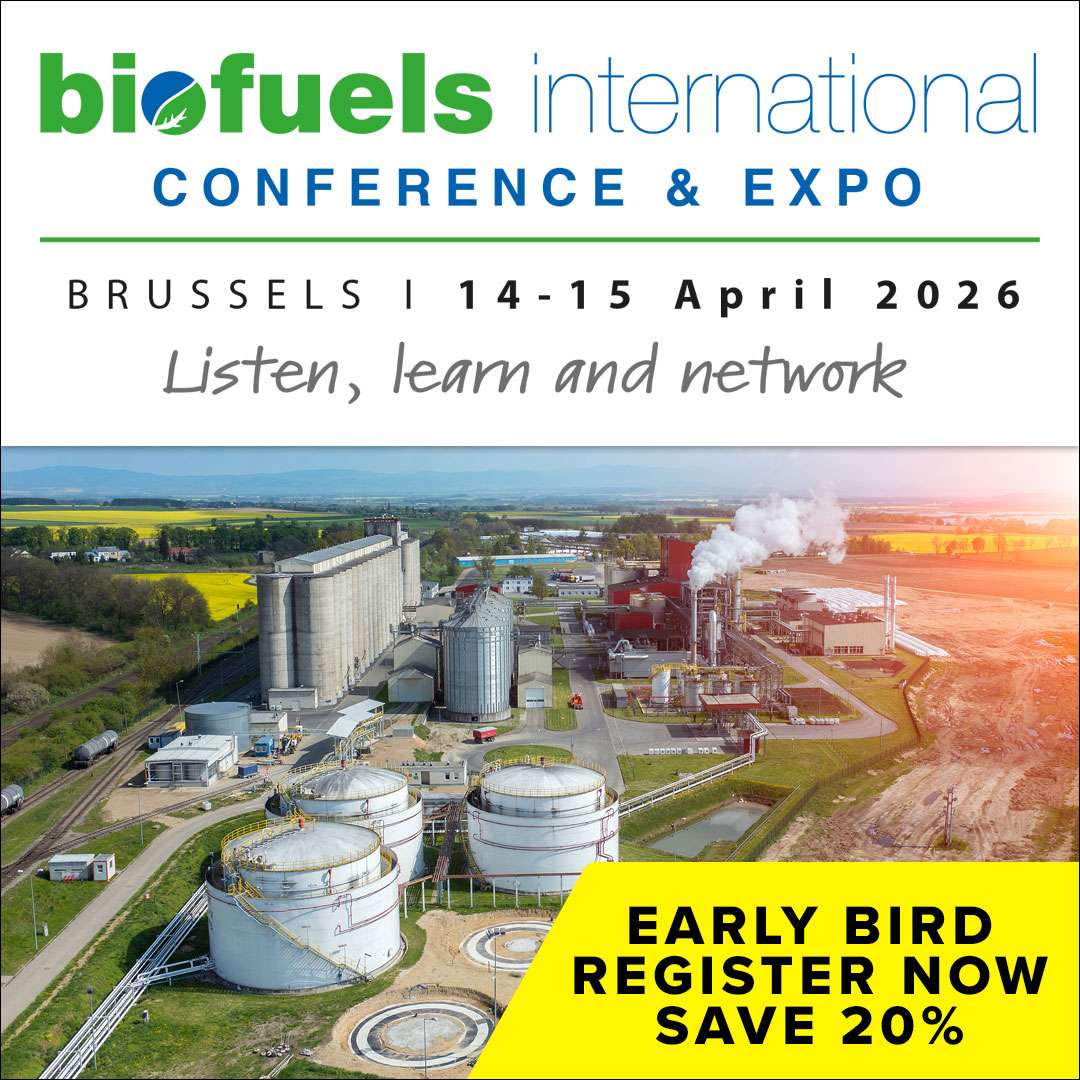Abstract:. We have developed methods to utilise alternative feedstocks, synthesised and discovered novel catalysts, and improved transesterification processes.
However, continuous optimisation and innovation are required to compete with fossil fuels and ultimately replace these environmentally harmful energy sources.
Recent experimental advancements include the optimisation of algae as a biomass for synthesising biofuel, novel sustainable methods for producing highly effective metal oxide catalysts, and the application of artificial intelligence. Currently, in more advanced development, the use of an electrospun nanomembrane is being explored to reduce production time and develop novel fuel blends. Alongside these innovations, numerous discoveries have been made regarding more efficient and sustainable feedstocks for biofuel production. Each of these unique approaches offers substantial advantages while challenging conventional production methods.
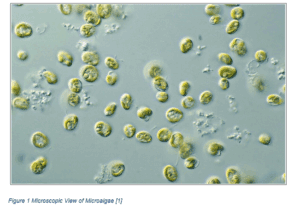
Reimagining microalgae
Microalgae serve a wide variety of uses, ranging from a promising alternative to fossil fuels to diverse industrial applications in resource recovery, wastewater treatment, and waste management. However, in practice, incorporating microalgae as a feedstock to produce bio-products has been commercially unattractive.
High costs are associated with microalgae processing, along with concerns regarding environmental impact and inconsistencies arising from the use of traditional organic solvents [2].
Recent advancements by Z.
Dou et al. observed that deep eutectic solvents offer a promising solution. Deep eutectic solvents (DES) provide advantages in biodegradability, ease of preparation, low toxicity, and thermal stability [2]. DES are combinations of Brønsted or Lewis acids and bases, along with a cation.
Their structure allows components to be mixed at varying molar ratios to achieve desirable properties. As a result, they can be formulated as less toxic, recyclable, and more efficient solvents.
Although the application of DES in hydrothermal disintegration cycles has not yet yielded a clear-cut solution to eliminate high energy costs, it has demonstrated a significant decrease in the resources required to process microalgae.
DES selectively cleave lignin and hemicelluloses, enabling greater access to cellulose. This results in far more efficient lipid extraction compared to traditional solvents.
DES not only enhance algae lipid extraction by almost 56% [2], but also facilitate extraction more efficiently than traditional organic solvents due to their low vapour pressure and switchable polarity [2].
This ease of extraction allows for greater control and consideration of the long-term potential environmental impacts of using this solvent, as well as the proposal of economic incentives.
The availability of more efficient and environmentally sustainable solvents pushes the boundaries of current microalgae usage as a potential feedstock, while incentivising opportunities for optimisation and improvement.
In addition to processing, harvesting microalgae presents significant hurdles for commercialisation. The cost of harvesting microalgae can approach 60% of total production costs due to their small cell size relative to the surrounding solution.
Various innovative harvesting techniques have been developed, including sedimentation, mechanical screening, membrane filtration, air flotation, and, most commonly, flocculation [3].
Flocculants are used to trap microalgae into larger masses, allowing easier harvesting. K. Cholapandian et al. developed a bio-flocculant that is also a lipid-rich cellulolytic fungus.
The bifunctionality of this bio-flocculant serves as a sustainable alternative to current flocculants, which lack the benefits of being non-toxic and biodegradable, and provides an economic incentive by boosting lipid yields during harvest.
Although the research has not quantified the financial benefits, it clearly stated that bio-flocculant production is highly cost-effective, as it is cultivated from inexpensive agricultural cellulose waste such as rice straw [3].
The researchers determined the highest harvest efficiencies at varying parameters including contact time, pH, and flocculant/microalgae ratio.
Harvest efficiency was measured using a spectrometer to detect chlorophyll presence, indicating bio-flocculant density and thereby assessing its ability to adhere to microalgae cells.
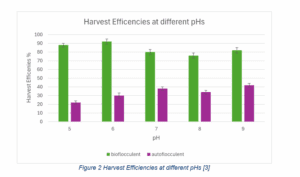
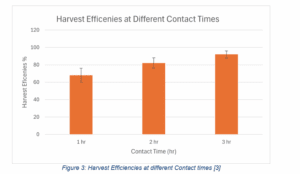
Results showed that harvesting efficiency could reach 97.6% with 24 hours’ contact time at a 30% flocculant/microalgae ratio and at a pH of 7 [3].
However, more reasonable efficacies were around 93% with a much shorter contact period of two hours at similar pH levels.
To achieve extreme harvesting efficiencies, a few factors should be noted: the highest percentage was achieved only due to the extended contact period; additionally, the mass of the fungi may represent a significant portion of the final biomass.
Pursuing the greatest return from such an endeavour may create financial trade-offs, and determining the optimal contact period to balance time, cost, and output requires further research.
Novel enzymes and processing optimisation
Beyond advances in DES, T. Liang et al. proposed a highly resilient and versatile enzyme: Alg0392, a novel alginate lyase isolated from the bacterium Alteromonas sp. A1-6.
The researchers classified it as bifunctional, with particular emphasis on its ability as a highly effective alginate degrader. Moreover, it demonstrates excellent tolerance towards commonly used organic solvents.
Research showed that when treated with a variety of organic solvents, the enzyme’s activity remained nearly unaffected [4].
Under other stressors such as pH and temperature, it demonstrates stability within a pH range of 6–9 and at temperatures approaching freezing.
The enzyme activity is most optimal at a pH of 6, while maintaining around 80% activity between pH 6 and 8.
Its optimal temperature lies between 25–30 °C [4].Fig. 2 below visualizes the enzyme resilience in different organic solvents, a key industry requirement.
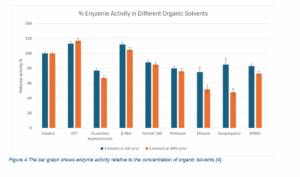
The enzyme’s performance remains close to or exceeds 100% activity in many commonly used organic solvents. Although its activity declines at higher concentrations, its resilience remains unquestionably high.
The application of this novel alginate lyase could enhance current methods of processing macroalgae and reduce costs through more efficient biomass processing.
Research also indicates that the enzyme production process is robust and uncomplicated. In fact, the growth curve modelling enzyme production when using alginate as a medium suggests that “A1-6 can utilise alginate to grow and produce the enzyme that can decompose alginate.”
Although the estimated cost of application remains unknown, it is expected not to adversely affect the economic feasibility of macroalgae processing if implemented industrially.
Genetic engineering and biofuel blends
Advancements in genetic engineering have transformed microalgae into carbon-neutral feedstocks for biodiesel production. However, relying solely on carbon footprint to determine environmental impact fails to capture the full picture.
Biodiesel synthesised from algae lipids has been shown to produce unsustainable amounts of harmful NOx and exhibits relatively poor engine performance [5].
Despite this, A. R. Adib et al. proposed a promising solution through a novel blend of renewable diesel synthesised from used vegetable oil and biodiesel processed from algae lipids.
The optimal blend comprises 70% diesel, 15% microalgae diesel, and 15% renewable diesel. Traditional diesel and micro-diesel blends emit excessive NOx and are less efficient.
This new blend achieved a brake-specific fuel consumption (BSFC) of around 247.56 under varying loads. Although consumption remains higher than that of neat diesel, compared to a traditional diesel–microalgae blend, this blend exhibits 2.15% less fuel consumption [5].
Not only does it enhance engine performance, but it also achieves an 8.4% decrease in NOx emissions compared to traditional RD and MD blends [5]. While this reduction may seem modest, emissions are measured in millions of tonnes; even a slight reduction, if effectively applied, contributes significantly to a cleaner and greener planet.
Bioconversion through Oleaginous Yeast
In June 2025, researchers Amporn Malisorn et al. from Thailand developed new strategies to convert agricultural waste into high-quality biodiesel feedstock.
Their methods focused on utilising oleaginous yeast to process biomaterial, as well as optimising lipid production through carbon-to-nitrogen ratios while cultivating the yeast strains.
Oleaginous yeasts have the capacity to synthesise and accumulate lipids in forms suitable for feedstocks, e.g., triacylglycerols.
The research investigated four oleaginous yeasts: Candida tropicalis X37, Kluyveromyces marxianus X32, Trichosporonoides spathulata JU4-57, and Rhodotorula mucilaginosa G43 [6]. Among these, C. tropicalis X37 demonstrated superior biodiesel properties that meet and exceed industry standards.
Although multiple yeast strains were evaluated for lipid production under various conditions, C. tropicalis X37 yielded the most significant results, producing a feedstock with a lipid content of 41.6% when cultivated using molasses as a carbon source [6].
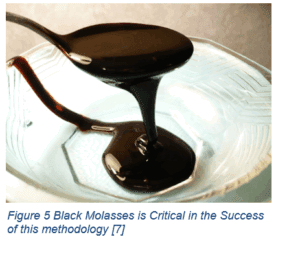
This high lipid content positions it as a strong alternative compared to other sustainable feedstocks, which typically range from 15–30% lipid content [6].
However, this yeast strain is limited by its dependence on specific optimal nitrogen conditions, eliminating carbon sources like whey lactose due to nitrogen deficiency. C. tropicalis X37 prefers ammonium sulphate as its nitrogen source, outperforming urea.
Nitrogen must be introduced during cultivation at a specific carbon-to-nitrogen ratio, creating desirable conditions that encourage lipid synthesis while moderating growth. An excess of nitrogen leads the yeast to prioritise reproduction over lipid production [6].
In industrial settings, this limitation can be mitigated through lipid production using molasses, as suitable conditions were achieved without requiring ammonium sulphate.
This avoids the use of costly nitrogen sources. Although the narrow optimisation margins and limited flexibility may deter some industrial applications, the resulting biodiesel demonstrates superior fuel quality.
Listed below in Fig. 4 are the biofuel properties compared to current industry standards.
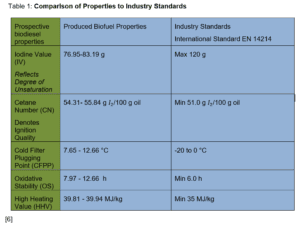
The selected properties, when compared to industrial standards, are all well above minimum requirements. The oxidation stability reaches nearly twice the standard OS value. Exceeding these standards highlights the biofuel’s reliability, consistency, and potential to match or surpass traditional diesel and fossil fuels. However, the biofuel’s cold filter plugging point (CFPP) fails to meet industry standards. Despite this, its high performance and premium fuel quality reinforce its promise as a leading candidate for replacing conventional diesel.
Although high operational costs remain a challenge, ongoing optimisation could improve viability. The limited flexibility of this process in producing lipid-dense feedstocks may restrict scalability, but the results represent a major step towards sustainable biofuel production.
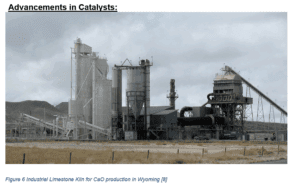
CaO nanocatalyst
Over the years, calcium oxide (CaO) has gained recognition as a highly efficient catalyst and has established itself as a powerful nanocatalyst in biodiesel production. Laboratory trials have achieved up to a 99% biodiesel yield [8]. However, CaO synthesis via the calcination of CaCO₃ produces carbon dioxide as a by-product, raising environmental concerns.
Recent research by K. Cholapandian et al. proposed a more sustainable approach to synthesising CaO using locally sourced Acalypha indica leaves from Aranvoyal village, Tiruvallur district, Chennai, India. They achieved a 94.74% biodiesel yield using response surface methodology to optimise production [10]. This plant-based method provides an environmentally friendly alternative to traditional limestone.
Similarly, Garg R. et al. developed a sustainable method to synthesise CaO using orange peels, achieving a 93.4% yield while minimising waste [11]. Cholapandian et al. addressed the need for a non-toxic, less corrosive, plant-based catalyst [10], while Garg et al. utilised phytochemical-rich orange peel extracts to initiate CaCO₃ crystallisation, eliminating the need for toxic chemical reducing agents. Both methods enhance CaO’s image as a sustainable nanocatalyst, reducing the environmental footprint of biofuel production.
Although highly efficient in laboratory conditions, industrial scalability remains uncertain. While locally sourcing materials can boost regional economies and reduce transport costs, scalability challenges and inconsistent supply chains may hinder adoption. The lack of life cycle assessment data for both processes also leaves their overall environmental impact unclear. Nevertheless, these findings expand the potential for sustainable CaO synthesis and strengthen biodiesel’s position as a green alternative to fossil fuels.
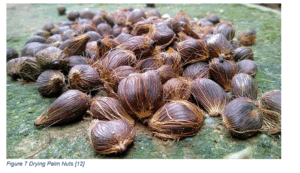
Palm kernel shell catalyst supports
Another noteworthy advancement is the work of M. A. Shakir et al. To combat rising biowaste from the palm oil industry, the researchers developed a process to increase the value of palm kernel shells by optimising their chemical properties using phosphoric acid.
The shells were first carbonised, then impregnated with phosphoric acid to facilitate key chemical processes that produce palm kernel shell-activated carbon. This creates a highly porous structure, enabling it to function as an effective catalyst support for biodiesel transesterification. Integrated into standard transesterification methods, the researchers achieved a 94.92% yield [13].
The catalyst supports multiple reaction cycles; however, efficiency decreases by around 10% with each reuse [13]. Overall, the study demonstrates how agricultural waste can be repurposed as catalyst support material, advancing both sustainability and circular economy practices in biofuel production.
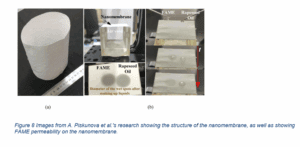
Electrospun nanomembrane
The traditional approach to biodiesel production involves multiple steps—transesterification, separation, cleaning, and filtration. The pursuit of optimisation to reduce production costs and improve scalability remains an enduring goal.
A. Piskunova et al. proposed the use of polymer membranes made from poly(vinylidene fluoride). These electrospun nanomembranes aim to reduce the number of production steps involved in separation and cleaning.
Traditional fatty acid methyl esters undergo transesterification followed by several separations and washings. In contrast, polymeric nanomembranes “passively filter” crude biodiesel, allowing fatty acid methyl esters to pass through while retaining by-products such as triglycerides, glycerol, and solid catalysts [14]. This enables transesterification and cleaning to occur in a single unit.
Ultimately, electrospun nanomembranes reduce production costs by lowering energy consumption, processing time, and space requirements. Their ability to retain catalysts and by-products also suggests potential applications in recovering expensive catalysts that would otherwise be lost in conventional systems.
The rapid implementation of this technology appears highly likely, given the promising results that yield biodiesel of extremely high quality. The synthesised biodiesel meets EN 14214 standards in terms of cetane number (67–74), viscosity (4.96–6.73 mm²/s), density (860–900 kg/m³), and closed-cup flash point (160–172 °C) [14]. Oxidative stability and CFPP were not reported.
However, widespread adoption depends on infrastructure investment for mass production of the nanomembranes and the development of optimised equipment capable of fully utilising the benefits of this innovative process.
AI in biodiesel
The optimal production of biodiesel requires extensive experimentation and comparison to achieve reliable results. Hence, I. Yahya et al. implemented artificial intelligence (AI) to predict and optimise microwave-assisted biodiesel yield based on variables including the alcohol-to-oil ratio, catalyst concentration, temperature, and reaction time.
AI and machine learning tools demonstrated significant success in capturing and modelling the complex, non-linear relationships among multiple variables. Their model achieved an R² value of 0.949 and a mean squared error of 54.64, indicating a strong representation of the overall relationships. Although ideal conditions were not explicitly detailed, the AI model was used to identify the most optimal combination of parameters, enabling the researchers to achieve a 99% yield under those conditions [15].
The success of this model underscores the potential of integrating AI and machine learning into biodiesel production, allowing researchers to optimise experimental parameters with greater efficiency and lower costs. Artificial intelligence, with its increasing relevance in modern scientific progress, exemplifies its growing capability to manage complex, repetitive, and data-intensive tasks that would otherwise slow experimentation.
This study represents only one instance of AI’s application in optimising biofuel production. As these technologies advance, optimisation may no longer require lengthy trial-and-error methods but instead rely on sophisticated predictive models capable of identifying ideal synthesis conditions rapidly and accurately.
Conclusion
Recent developments in calcium oxide nanocatalysts, the application of deep eutectic solvents in algae hydrothermal disintegration cycles, algae optimisation, catalyst supports, and electrospun nanomembrane filters are advancing our understanding of biodiesel production while addressing challenges in refinement, scaling, and production costs.
While microalgae-based biofuel holds tremendous promise as a sustainable alternative to conventional diesel, several challenges remain—including carbon emissions during lipid extraction, uncertain scalability costs, and the lack of developed machinery for commercialisation—which continue to present significant barriers.
Despite these obstacles, multiple studies have demonstrated that biodiesel derived from genetically modified microalgae and advanced biocatalysts can match, or even surpass, conventional diesel in tribological performance. These findings underscore that, with continued innovation in biocatalysis, strain engineering, and process optimisation, microalgae-based biodiesel represents a viable and impactful step towards a greener, more sustainable energy future.
Biographies
Raj Shah is a Director at Koehler Instrument Company in New York, where he has worked for nearly 30 years. He is a Fellow of the Energy Institute, the Royal Society of Chemistry, and the Institution of Chemical Engineers, among others. Dr Shah earned his doctorate in chemical engineering from Pennsylvania State University and is an elected Fellow of ASTM International, STLE, NLGI, IChemE, AIC, CMI, InstMC, AAE, and the Energy Institute. He has over 650 publications and three books to his name, and was honoured as one of Petroleum Economist magazine’s “most influential figures in the energy sector worldwide.”
He serves on the advisory board of several universities, including Farmingdale State College (SUNY), Auburn University, and Pennsylvania State University.
He is a co-editor of Fuels and Lubricants Handbook: Technology, Properties, Performance, and Testing (2nd edition, ASTM International, 2020).
Further details are available at: https://www.astm.org/DIGITAL_LIBRARY/MNL/SOURCE_PAGES/MNL37-2ND_foreword.pdf
Clark Ye, Michael Lotwin, and Mathew Stephen Roshan are students in the Department of Material Science and Chemical Engineering at Stony Brook University, where Dr Shah serves on the External Advisory Board.
References
[1] Dou, Z., et al. (2023). Deep eutectic solvents as effective and sustainable media for microalgae processing: A review. Bioresource Technology, 386, 129474. https://doi.org/10.1016/j.biortech.2023.129474
[2] Cholapandian, K., et al. (2022). Development of a bifunctional lipid-rich cellulolytic fungus as a bio-flocculant for microalgae harvesting. Journal of Applied Phycology, 34(5), 2665–2678. https://doi.org/10.1007/s10811-022-02836-9
[3] Liang, T., et al. (2022). Characterisation of a novel alginate lyase (Alg0392) from Alteromonas sp. A1-6 and its potential for alginate degradation. International Journal of Biological Macromolecules, 218, 84–93. https://doi.org/10.1016/j.ijbiomac.2022.07.065
[4] Adib, A. R., et al. (2023). Blending renewable diesel from used vegetable oil with microalgae biodiesel for improved performance and emission characteristics. Fuel Processing Technology, 245, 107548. https://doi.org/10.1016/j.fuproc.2023.107548
[5] Malisorn, A., et al. (2025). Optimisation of oleaginous yeast for high-quality biodiesel feedstock from agricultural waste. Renewable Energy, 233, 1219–1230. https://doi.org/10.1016/j.renene.2025.05.004
[6] Garg, R., et al. (2024). Sustainable synthesis of calcium oxide nanocatalysts from orange peels for biodiesel production. Journal of Cleaner Production, 441, 140050. https://doi.org/10.1016/j.jclepro.2024.140050
[7] Cholapandian, K., et al. (2024). Eco-friendly synthesis of calcium oxide nanocatalyst from Acalypha indica for biodiesel production. Environmental Nanotechnology, Monitoring & Management, 23, 100900. https://doi.org/10.1016/j.enmm.2024.100900
[8] Shakir, M. A., et al. (2024). Valorisation of palm kernel shells for activated carbon catalyst support in biodiesel transesterification. Waste Management & Research, 42(7), 1132–1143. https://doi.org/10.1177/0734242X24120433
[9] Piskunova, A., et al. (2023). Electrospun poly(vinylidene fluoride) nanomembranes for integrated biodiesel purification and separation. Separation and Purification Technology, 315, 123499. https://doi.org/10.1016/j.seppur.2023.123499
[10] Yahya, I., et al. (2024). Artificial intelligence-assisted optimisation of microwave-assisted biodiesel production. Energy Conversion and Management, 306, 118323. https://doi.org/10.1016/j.enconman.2024.118323











